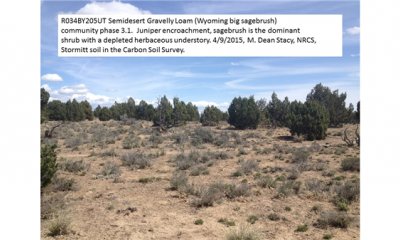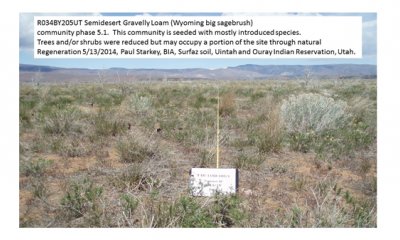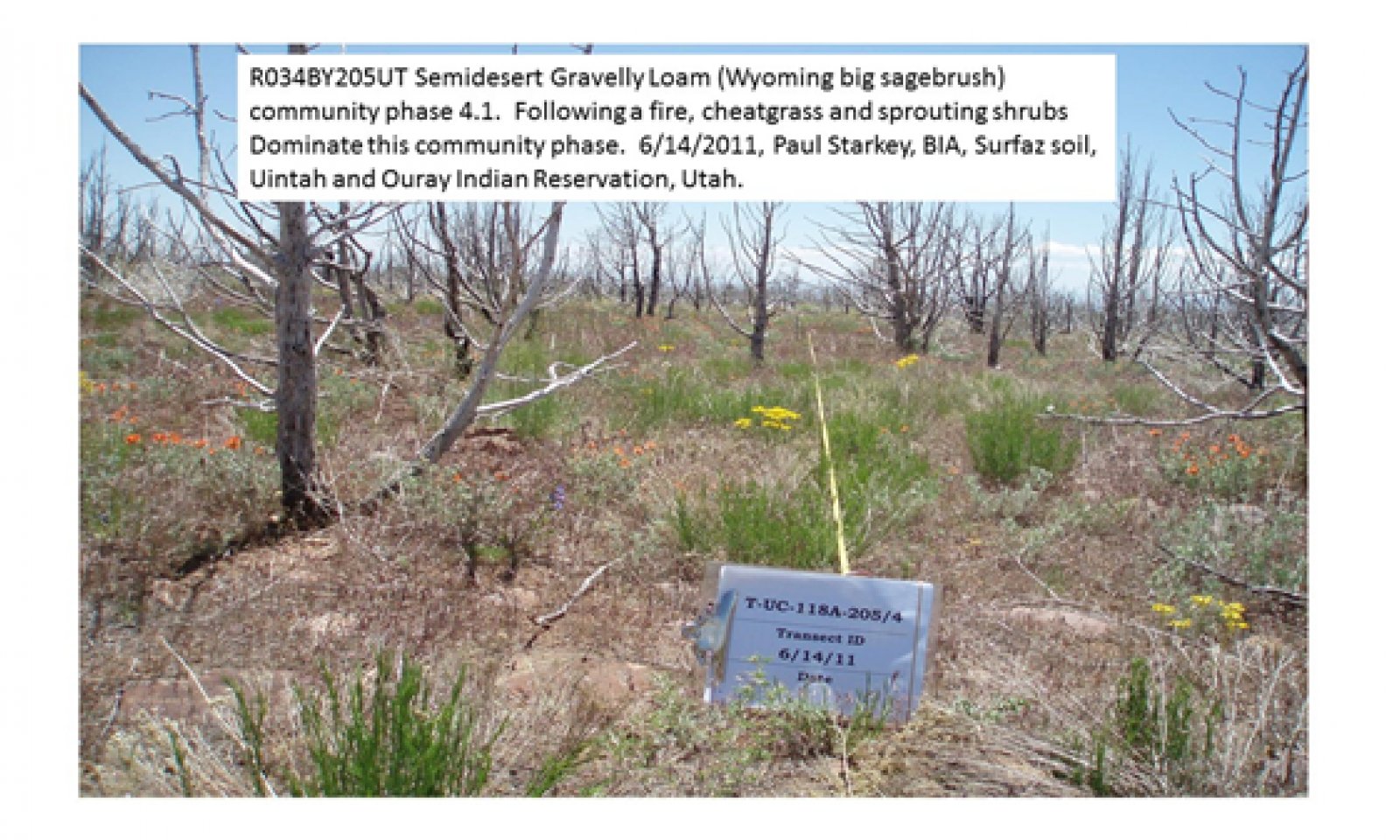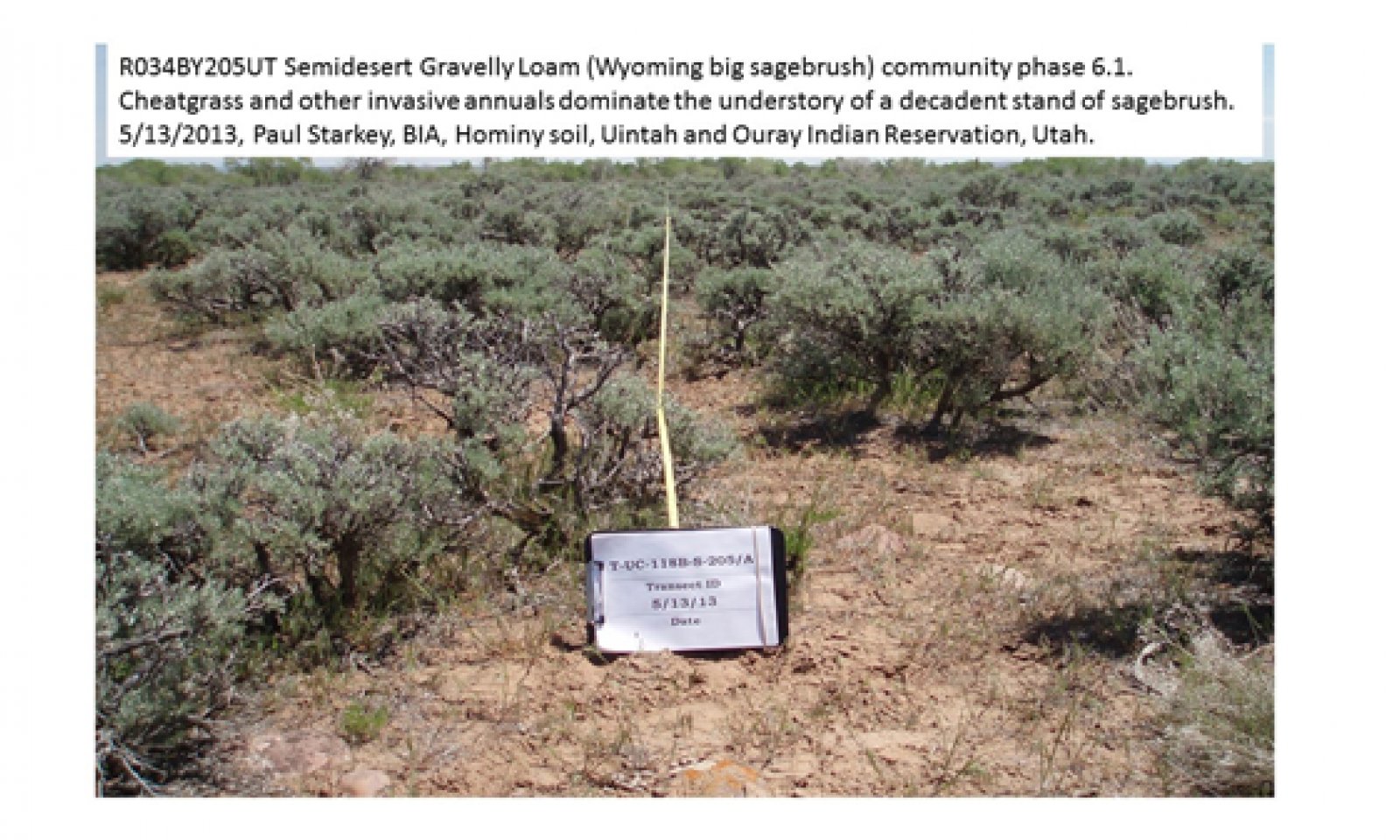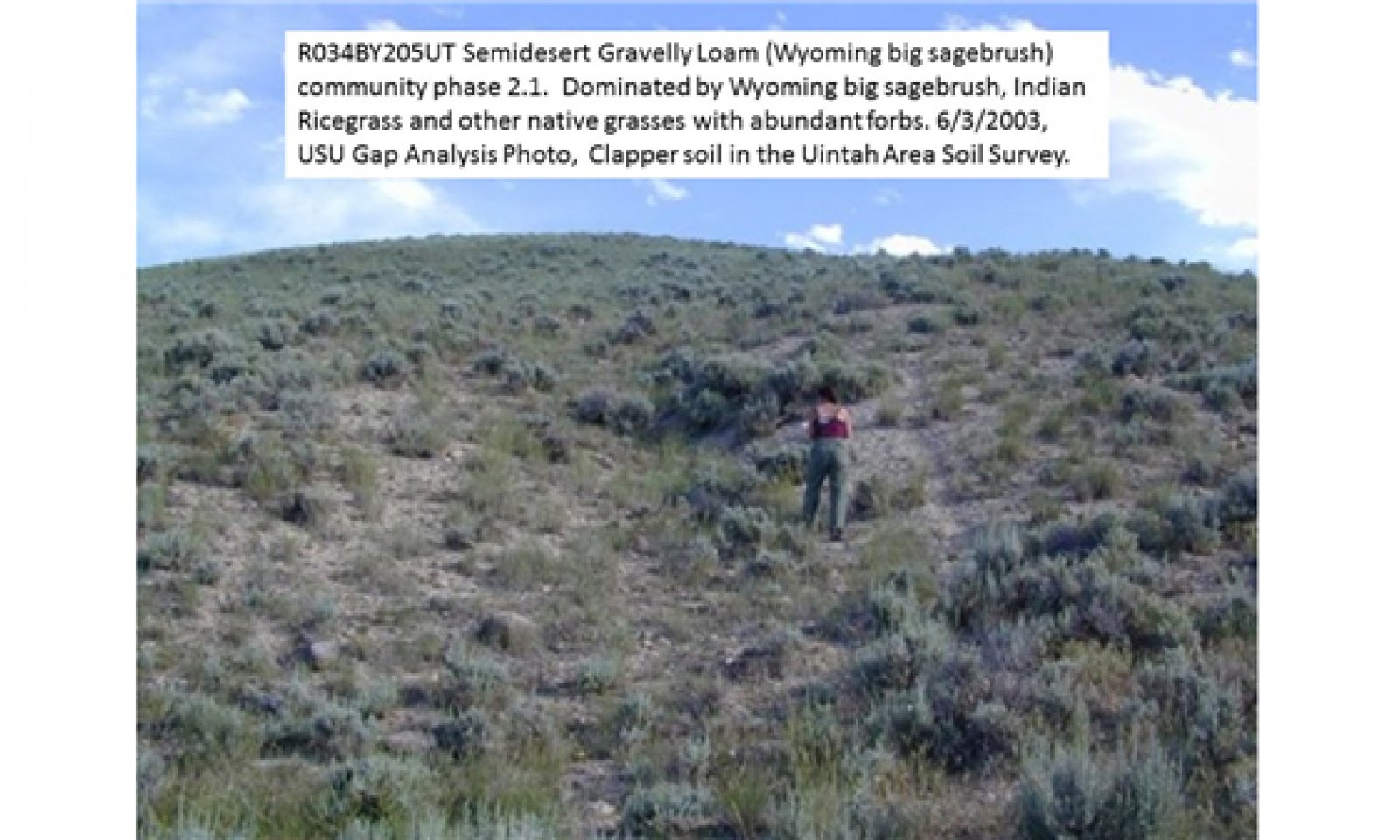
Semidesert Gravelly Loam (Wyoming Big Sagebrush)
Scenario model
Current ecosystem state
Select a state
Management practices/drivers
Select a transition or restoration pathway
- Transition 1-2 More details
- Transition 2-3 More details
- Transition 2-4 More details
- Transition 2-5.1 More details
- Transition 2-6 More details
- Transition 3-4 More details
- Restoration pathway 3-5 More details
- Restoration pathway 4-5 More details
- Transition 5.2-3 More details
- Transition 5-4 More details
- Transition 6-4 More details
- Restoration pathway 6-5.1 More details
-
No transition or restoration pathway between the selected states has been described
Target ecosystem state
Select a state
Description
The Reference State is a description of this ecological site just prior to Euro-American settlement but long after the arrival of Native Americans. The description of the Reference State was determined by NRCS Soil Survey Type Site Location information and familiarity with rangeland relict areas where they exist. The Reference State for this site would have been a shrub semi-desert characterized by Wyoming big sagebrush and associated native perennial forbs and grasses. A more complete list of species by lifeform for the Reference State is available in the accompanying tables in the “Plant Community Composition by Weight and Percentage” section of this document.
Submodel
Description
This state includes plant communities dominated by a diverse mixture of perennial grasses, a mixture of Wyoming big sagebrush and perennial grasses, and a community dominated by Wyoming big sagebrush. These community phases occur depending on the time since a disturbance that kills Wyoming big sagebrush has occurred, such as fire, insects, or drought, and grazing that provides adequate duration, timing, and intensity that maintain plant vigor and health of the plant community.
Plant communities in this state can include native, acclimatized, naturalized and invasive non-native species. This state is irreversibly changed from the reference state because these non-native species will now remain a permanent part of the community.
This plant community has the composition, structure and cover present that facilitates the capture, storage, and safe release of precipitation. Nutrients are being cycled through deep rooted perennial grasses, forbs, and evergreen shrubs, and energy capture throughout the entire growing season (March to October) such that this plant community and site resiliency is maintained. With a lengthened fire return interval (greater than 70 years), an increase in sagebrush canopy occurs until sagebrush dominates available resources. This results in a decrease in vigor, cover and reproduction of perennial grasses, and an increase in invasive annuals such as cheatgrass. Once junipers become a dominant feature, they are a permanent part of the plant community until a fire or management action removes them. The understory is depleted (lack of both living plants and seed bank) so that a return to state 2 is not possible.
Submodel
Description
Native shrubs such as Wyoming big sagebrush or rabbitbrush dominate the site. The occurrence of fire extends well beyond the normal period for the site. Wyoming big sagebrush is non-sprouting and will be killed by fire. Rabbitbrush can sprout after a fire and can become the dominant shrub. This state typically has invasive grasses and/or forbs as the dominant understory species. There may be a few native species remaining, but they do not dominate. Utah junipers may increase to occupy a significant portion of the over story, if a seed source is present. Wyoming big sagebrush dominates the shrub layer and may be decadent due to age. Indian ricegrass and other native bunchgrasses are significantly reduced due to increased shrub and tree competition and/or heavy grazing pressure. Galleta may increase.
Submodel
Description
Invasive grasses and forbs dominate this state. This may occur under a shortened fire return cycle which excludes native non sprouting shrubs by frequent burning or this may occur with repeated improper grazing, or a combination of the two. Indian ricegrass and other native bunchgrasses are significantly reduced due to competition from invasive annuals and/or improper grazing and shortened fire return interval. Only remnant perennial species remain. Highly combustible fine fuels from invasive annuals dominate the community. Reoccurring fire is common. Fire frequency is 5 – 30 years. Cheatgrass dominance prevents reestablishment of sagebrush due to competition.
Submodel
Description
This state is seeded to rangeland species that are composed of mostly introduced species. Trees and/or shrubs are initially reduced but they will eventually re-occupy the site through natural succession. Invasive annual grasses and weedy forb species primarily, cheatgrass and various annual mustards, may be present in the seeding, but do not dominate. The introduced perennial grasses prevent the reestablishment of native herbaceous species due to competition, and can persist indefinitely.
Submodel
Description
This state is characterized by a decadent sagebrush overstory with scattered other shrubs and the understory that is dominated by cheatgrass with scattered native grasses and forbs, caused by long-term improper grazing (including season long, overstocking, wrong season, etc.). Sagebrush and native herbaceous species cannot reestablish due to competition from cheatgrass.
Submodel
Mechanism
A threshold is crossed when there is an introduction of non-native species, primarily cheatgrass and various annual forbs, that become established in the community.
Mechanism
Sustained, long-term improper grazing (including season long, overstocking, wrong season, etc.); and/or prolonged drought. Lengthening of the fire return interval.
Mechanism
Long-term improper grazing (including season long, overstocking, wrong season, etc.) and/or prolonged drought; shortened fire frequency.
Mechanism
Disturbance such as a fire or brush management followed by a rangeland seeding.
Mechanism
Sustained, long-term improper grazing and/or the lack of fire.
Mechanism
Fire, with long-term improper grazing (including season long, overstocking, wrong season, etc.) and/or prolonged drought.
Mechanism
Fire or brush management with the seeding of introduced species with prescribed grazing.
Relevant conservation practices
| Practice | External resources |
|---|---|
|
Brush Management |
|
|
Prescribed Burning |
|
|
Range Planting |
|
|
Prescribed Grazing |
Mechanism
Seeding of introduced species with prescribed grazing.
Relevant conservation practices
| Practice | External resources |
|---|---|
|
Range Planting |
|
|
Prescribed Grazing |
Mechanism
Invasion of the site by junipers, long-term improper grazing (including season long, overstocking, wrong season, etc.) and/or prolonged drought; lengthened fire frequency allows the site to be invaded by juniper.
Mechanism
Long-term improper grazing (including season long, overstocking, wrong season, etc.) and/or prolonged drought; shortened fire frequency allows the understory vegetation on the site to be dominated by invasive annuals.
Mechanism
Fire, with long-term improper grazing (including season long, overstocking, wrong season, etc.) and/or prolonged drought.
Mechanism
Disturbance such as a fire or brush management followed by a rangeland seeding.
Relevant conservation practices
| Practice | External resources |
|---|---|
|
Brush Management |
|
|
Prescribed Burning |
|
|
Range Planting |
|
|
Prescribed Grazing |
Model keys
Briefcase
Add ecological sites and Major Land Resource Areas to your briefcase by clicking on the briefcase (![]() ) icon wherever it occurs. Drag and drop items to reorder. Cookies are used to store briefcase items between browsing sessions. Because of this, the number of items that can be added to your briefcase is limited, and briefcase items added on one device and browser cannot be accessed from another device or browser. Users who do not wish to place cookies on their devices should not use the briefcase tool. Briefcase cookies serve no other purpose than described here and are deleted whenever browsing history is cleared.
) icon wherever it occurs. Drag and drop items to reorder. Cookies are used to store briefcase items between browsing sessions. Because of this, the number of items that can be added to your briefcase is limited, and briefcase items added on one device and browser cannot be accessed from another device or browser. Users who do not wish to place cookies on their devices should not use the briefcase tool. Briefcase cookies serve no other purpose than described here and are deleted whenever browsing history is cleared.
Ecological sites
Major Land Resource Areas
The Ecosystem Dynamics Interpretive Tool is an information system framework developed by the USDA-ARS Jornada Experimental Range, USDA Natural Resources Conservation Service, and New Mexico State University.

